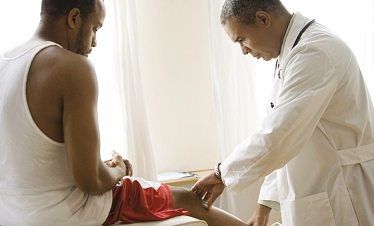Detect Arthritis Early
If you think you are too young to worry about arthritis, you’re mistaken. Rheumatoid arthritis, the most common type of arthritis (there are several kinds), strikes in the 30s and is genetic in origin. So if you have a history of the disease in the family, be doubly alert.
Also, know that arthritis can be a result of one or more other conditions or diseases. For instance, you may have a uric acid metabolism problem (protein metabolism disorder) leading to urate crystal (metabolic by-product) deposition in the joints, causing inflammation, swelling and pain. So when you visit a doctor tell him your complete medical history.
Arthritis Signs and Symptoms
Arthritis affects people of all ages. Fifty percent of people 65 years and older have arthritis. Younger people have a lower risk, yet still make up half of all people affected. Osteoarthritis, the most common form of arthritis, is a condition that causes “wear and tear” to your joint cartilage. Joints are the critical parts of the body that allow us to be active. Osteoarthritis develops after years of constant
motion and pressure in the joints. As the cartilage continues to wear away, the joint becomes increasingly painful and difficult to move. If you suffer from osteoarthritis, what can you do to ease your pain as you get back into the swing of outdoor the activities you enjoy?
Early morning joint stiffness, swelling of the joints after physical activity, pain in the joints while climbing stairs. Don’t ignore recurring joint pain; get to your doctor. He may recommend tests, such as checks for your rheumatoid factor and an immunological blood test (to detect dip in immunity).
You can control rheumatoid arthritis through medication (disease modifying drugs), physiotherapy and diet (consumption of anti-oxidants especially in fresh fruits and vegetables).
Treatment options such as medication, physical therapy and lifestyle changes like losing weight can help ease the discomfort. When these options fail to provide long-term relief, it may be time to consider knee replacement. In knee replacement surgery, surgeons resurface the damaged bone and cartilage of the joint and insert an artificial joint called a prosthesis, or implant. You may qualify for joint replacement if you have proven severe arthritis or failure of non-operative treatments.

